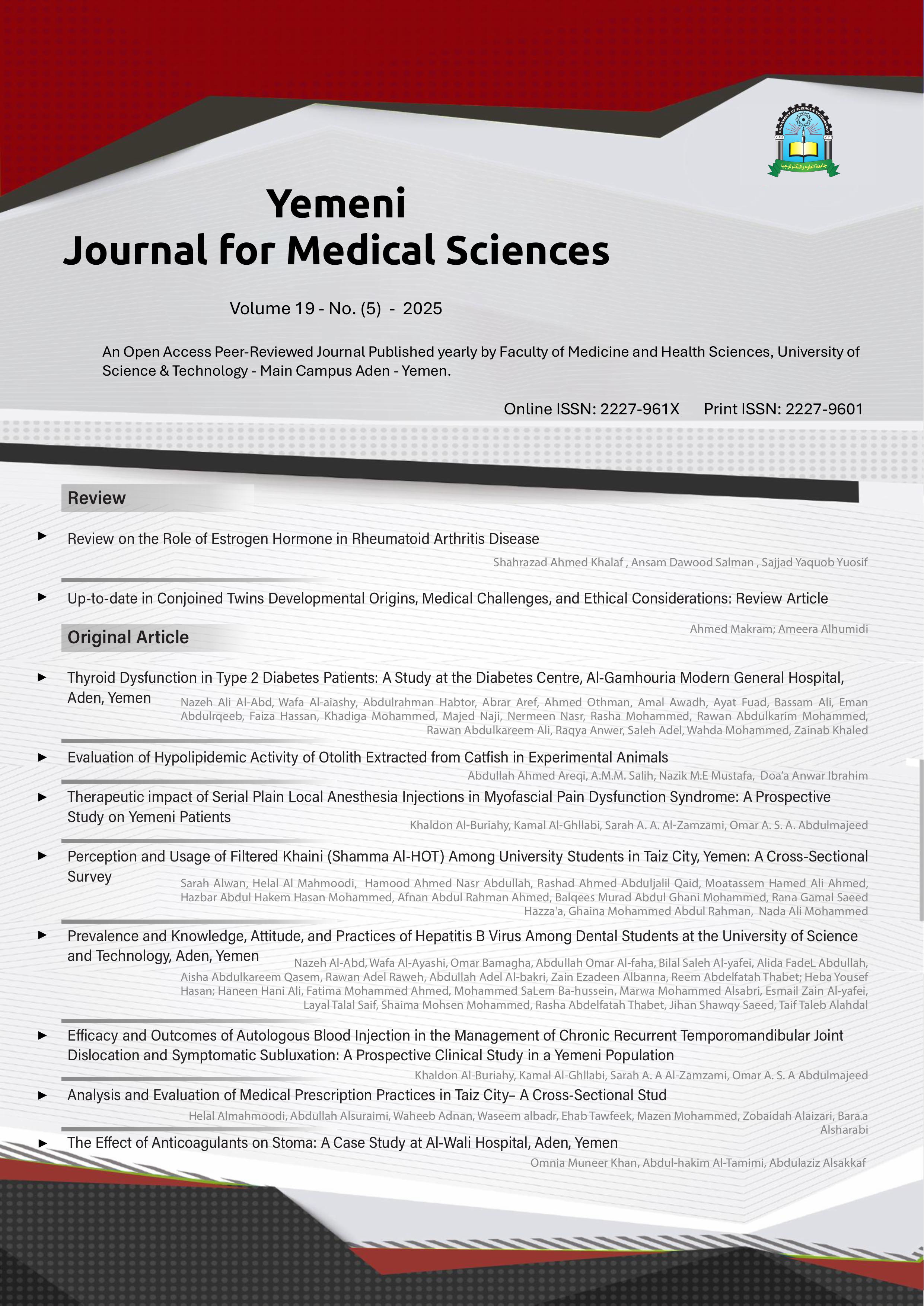Analysis and Evaluation of Medical Prescription Practices in Taiz City– A Cross-Sectional Study
##plugins.themes.bootstrap3.article.main##
Abstract
Introduction: Using medications wisely means giving the right medicine, in the right amount, and at the right price. According to the World Health Organization (WHO), this means that patients should get the medicines they need based on their health, in doses that suit them, for as long as necessary, and at the lowest cost for themselves and their community.
Objective: The aim of the study is to evaluate and analyze prescriptions from different areas in Taiz city according to WHO prescribing indicators, detect medication errors, and detect drug interactions.
Method: This study was a cross-sectional design study conducted from March to June 2022 in different areas in Taiz City. The prescriptions included in the study were from qualified doctors in different specialties. The prescription was analyzed according to WHO parameters and pattern indicators. From each prescription, data regarding the total number of drugs, generics, antibiotics, parenteral drugs, and essential drugs were extracted. A total of 350 medical prescriptions were included in this study.
Results: All the drugs that were collected in the prescriptions were 1610 drug kinds. found out that the average number of drugs per prescription was 4.61. In addition, the percentage of drugs prescribed by generic name was 8.3%. Furthermore, the percentage of antibiotics was 13.3%. Furthermore, the percentage of injection as the route of administration was 12.3%. And the percentage of drugs prescribed from the essential drug list was 69.4%. Furthermore, the number of drug-drug interactions detected was 108; the use of the drug was missed with 100 medicines; dosage frequency was missed with 166 medicines; the date of prescription was missed with 83 prescriptions; the age of the patient was missed with 162 prescriptions; unclear writing was in 70 prescriptions; the name of the patient was missed in 6 prescriptions; and the diagnosis was missed in 117 prescriptions.
Conclusion: The number of drug-drug interactions detected was 108; the dose of the drug was missed with 100 medicines; the dosage frequency was missed with 166 medicines; the date of prescription was missed with 83 prescriptions; the age of the patient was missed with 162 prescriptions; unclear writing was in 70 prescriptions; the name of the patient was missed in 6 prescriptions; and the diagnosis was missed in 117 prescriptions.
##plugins.themes.bootstrap3.article.details##
Medical Prescriptions, Interpretation, medication errors, drug interactions, Taiz

This work is licensed under a Creative Commons Attribution 4.0 International License.
YJMS publishes Open Access articles under the Creative Commons Attribution (CC BY) license. If author(s) submit their manuscript for consideration by YJMS, they agree to have the CC BY license applied to their work, which means that it may be reused in any form provided that the author(s) and the journal are properly cited. Under this license, author(s) also preserve the right of reusing the content of their manuscript provided that they cite the YJMS.








